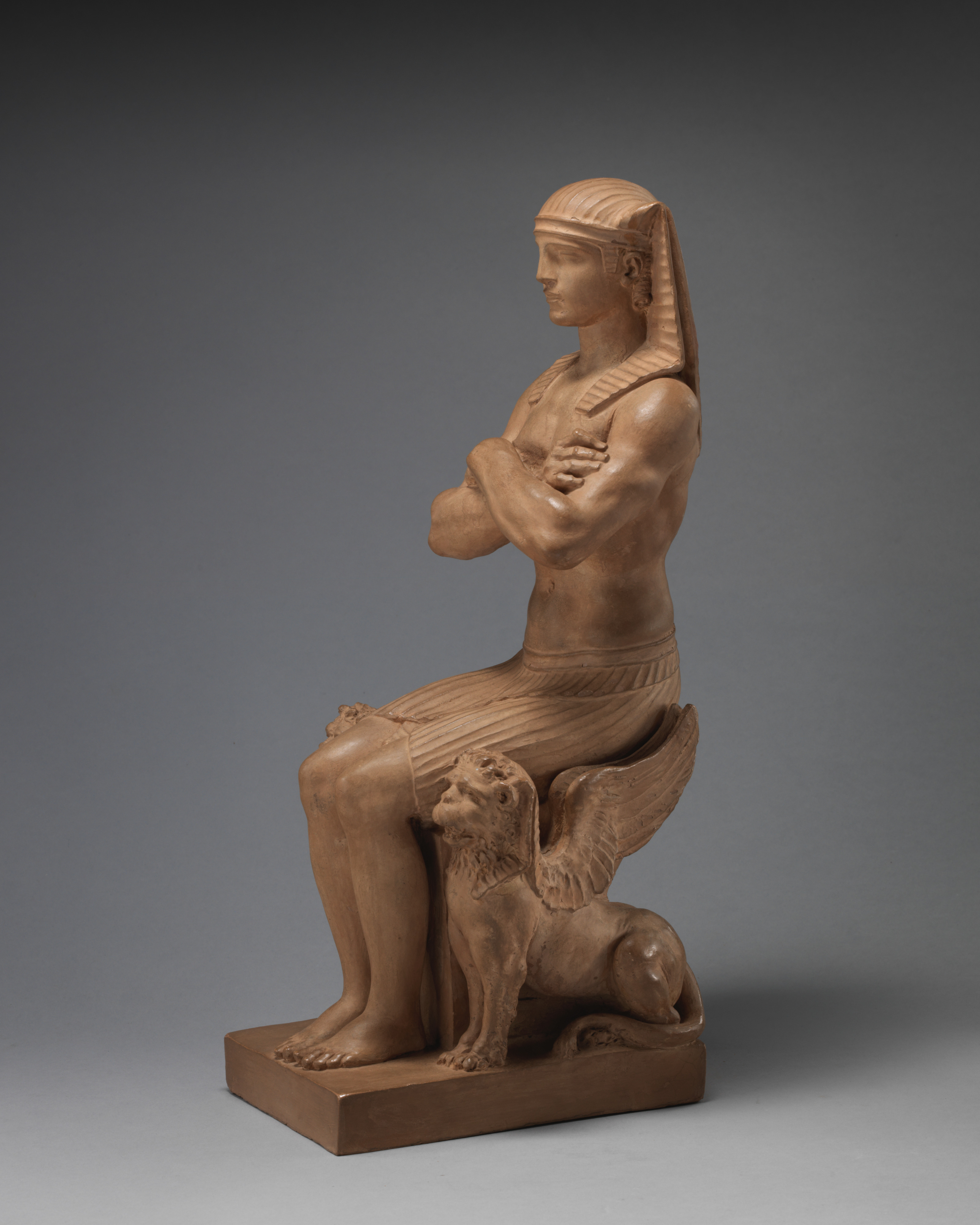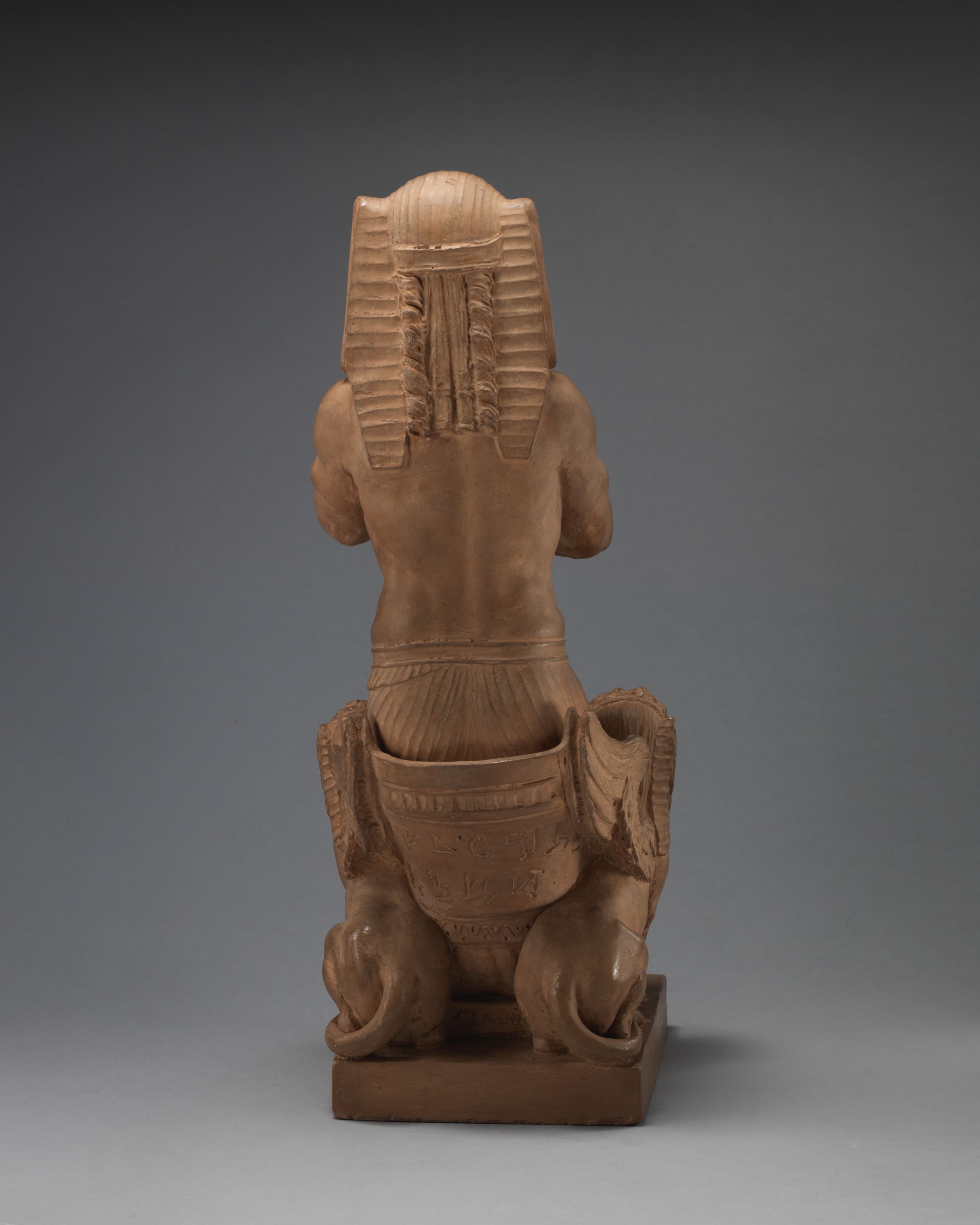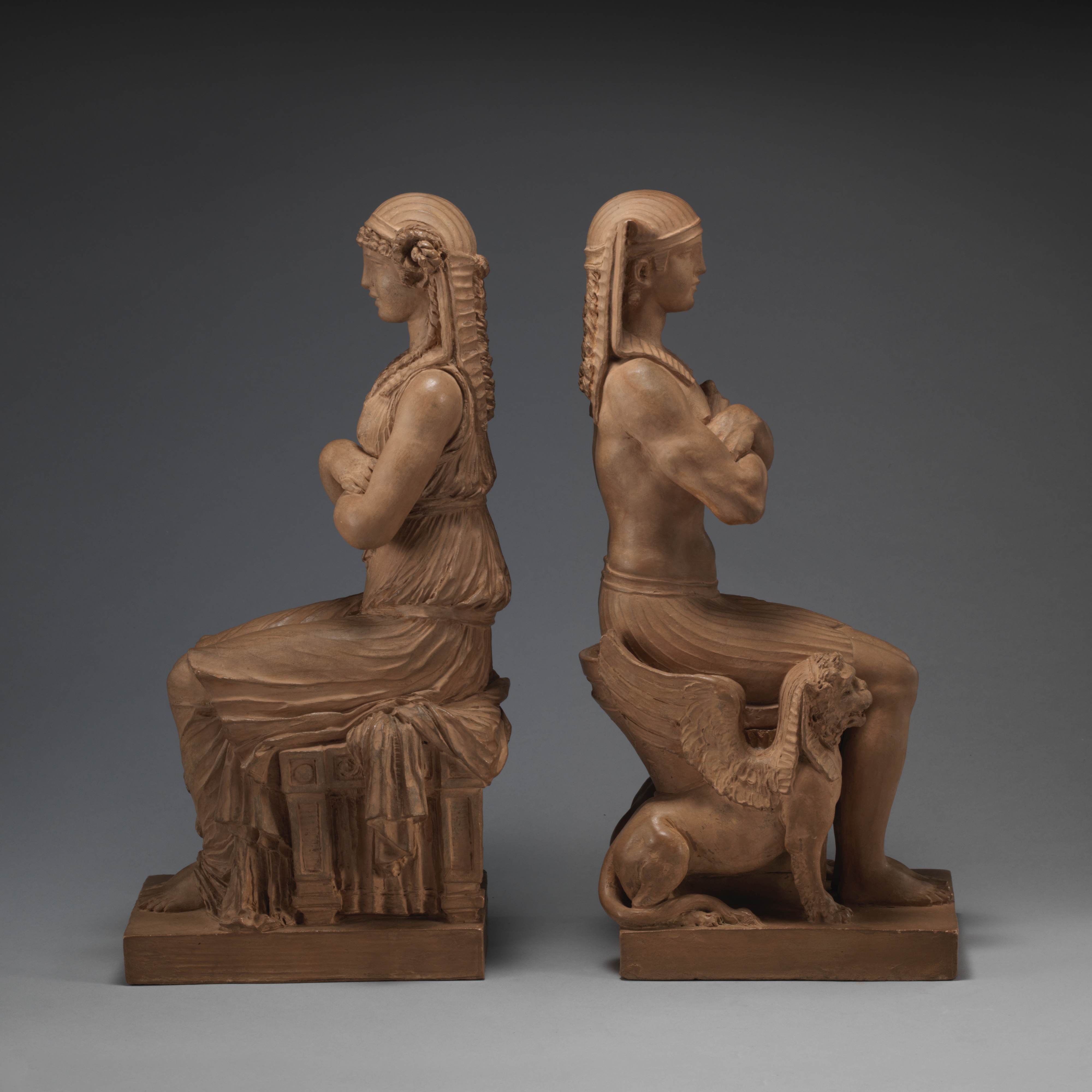Egyptian God
Clodion (Claude Michel) French
Not on view
The terracotta statuette reached its zenith as a standalone work of art in the second half of the eighteenth century at the hand of the superbly gifted French sculptor, Clodion. This delightful pair of undated terracottas exemplifies Clodion's interest in the art of ancient Egypt, which began early in his career, when he lived in Rome between 1762 and 1771. The male figure was modeled after two well-known ancient prototypes -the head of Antinoiis Osiris (Vatican), and the enthroned figure of Ramses II (Louvre) -while the female figure fuses classical references in a similar fashion through her Grecian costume and Egyptian-inspired hairstyle and pose.
In their rigid poses, Clodion' s Egyptian figures lack the buoyant movement and subtle sensuality typical of his beloved bacchante subjects. Yet this pair exhibits the artist's characteristic whimsicality in their many eccentric details. The comical inelegance of their tilted postures (as he leans left and she leans right), the exaggerated musculature of the male figure, and the animate faces of the lions undermine the formality of the hieratic types. These deftly modeled statuettes translate the language of Egyptian classicism into a playful pastiche intended for the amusement and admiration of Clodion's sophisticated international clientele.
Due to rights restrictions, this image cannot be enlarged, viewed at full screen, or downloaded.
This artwork is meant to be viewed from right to left. Scroll left to view more.







